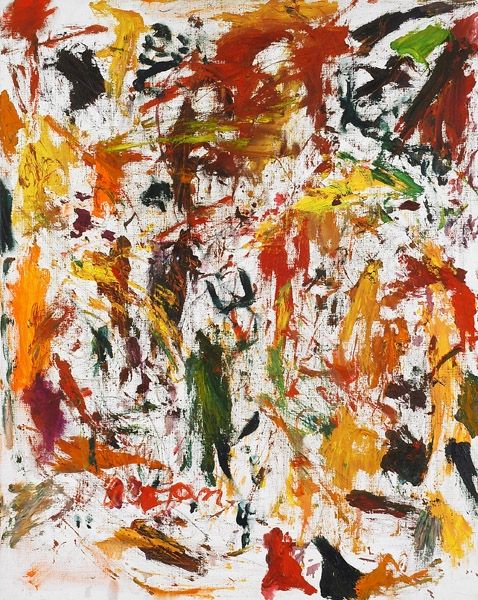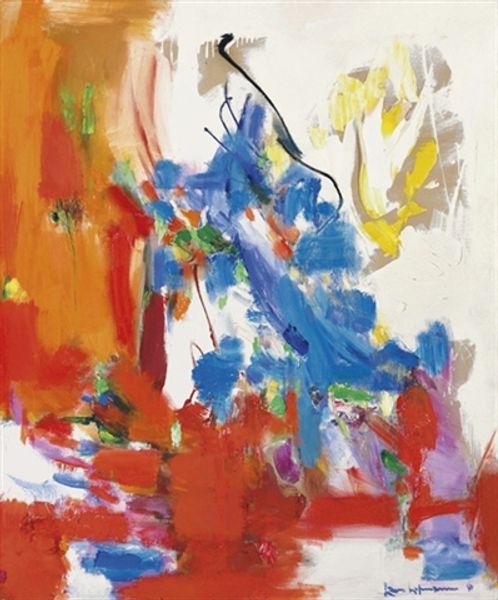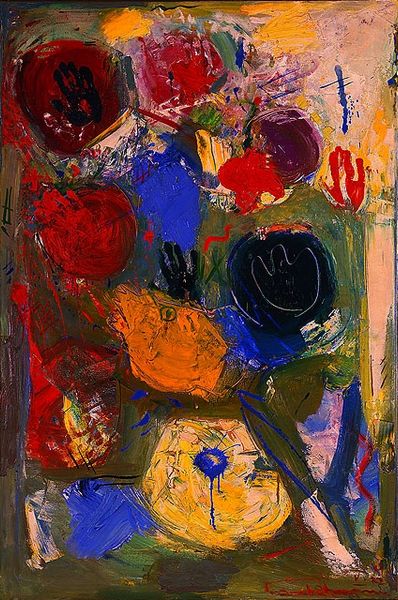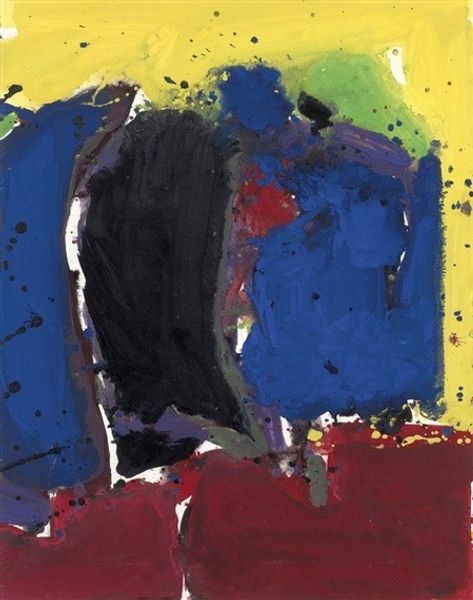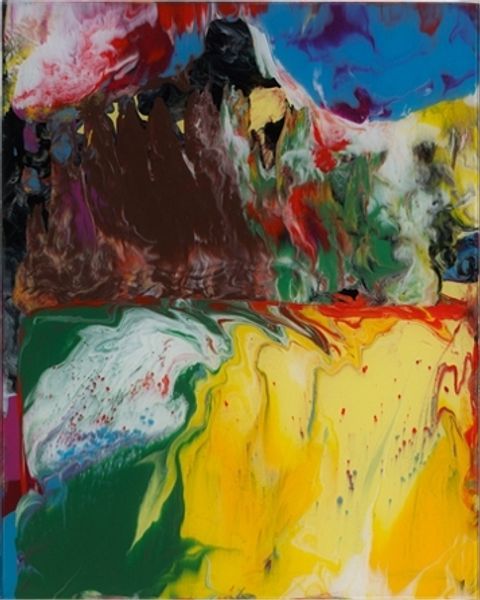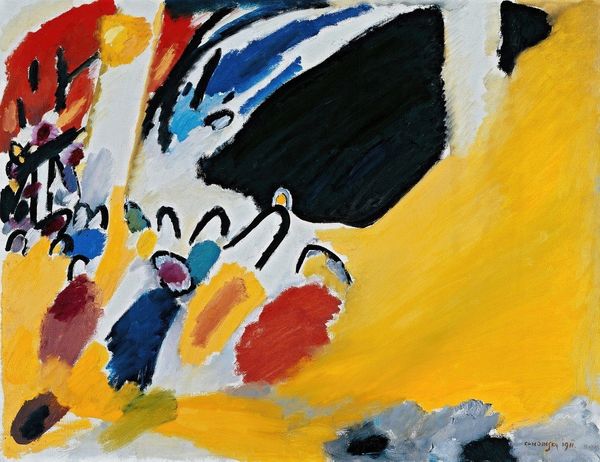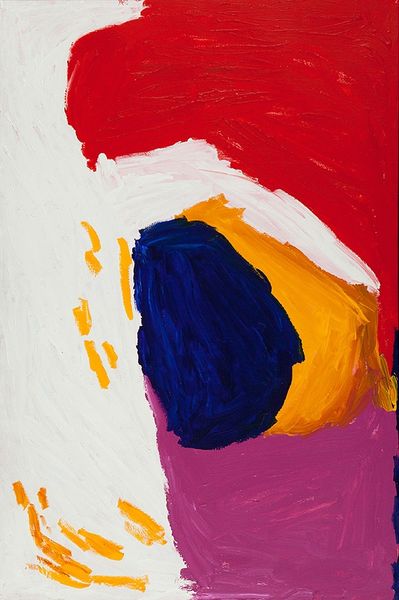
Copyright: Ernst Wilhelm Nay,Fair Use
Curator: This is "Furioso" by Ernst Wilhelm Nay, an oil painting on canvas completed in 1963. The work stands as a notable example of Abstract Expressionism. What are your first thoughts? Editor: The texture is immediately striking. That thick impasto and the way the paint has been applied… it feels raw, almost aggressive, befitting the title. The color palette feels very fauvist to me. Curator: Nay certainly pushes the limits of materiality here, doesn’t he? Consider that this was painted in post-war Germany. Abstract art allowed a detachment from recognizable imagery. Nay turned to pure form and color. There is a tangible relationship here to the rebuilding process – it’s almost as if the raw materiality becomes symbolic of renewal, creating something from near-destruction. Editor: I think there is an important social context to that. In a time when representational imagery might have been loaded with unwelcome political meaning, pure abstraction was inherently political by opting out of any official line. But beyond that, it could communicate trauma without needing to be specific or literal. The choice to move to an impasto application…this physicality of painting became almost sculptural, marking art’s own reconstruction. Curator: Exactly, art became an action, the painting embodies energy itself. Notice the shapes – orbs of color interacting within a defined field. Nay called these his "Disc Pictures" moving into complete abstraction, freeing color from any form or meaning. These discs suggest wholeness. The visible layering suggests process—a key concept of that era when matter became everything. Editor: How were these works perceived critically? Was Nay considered part of a broader cultural shift within the German art scene, moving away from earlier expressionist tendencies? Or perhaps a dialogue between that legacy and this turn to abstraction? Curator: He was actually celebrated and seen as an innovator, and his style, of using colorful disks set him apart and also provided a comforting image amidst national grief and the division of Germany. His recognition speaks volumes of how the role of public imagery transformed as art transitioned away from purely serving those in power. Editor: A powerful thought indeed. It's fascinating how this painting transcends its immediate visual impact to represent a complex moment in German cultural and political history. Curator: Absolutely. Seeing Nay's "Furioso" as more than just a composition of shapes and colors, opens a whole new window onto the socio-political world it inhabits.
Comments
No comments
Be the first to comment and join the conversation on the ultimate creative platform.

